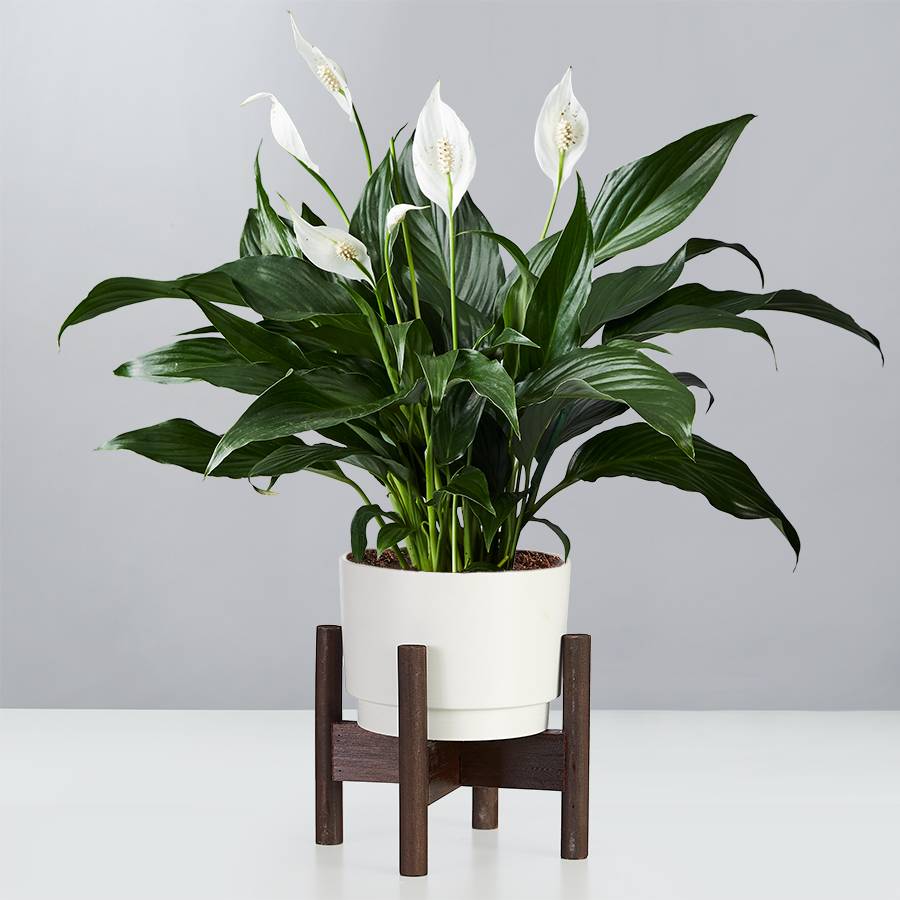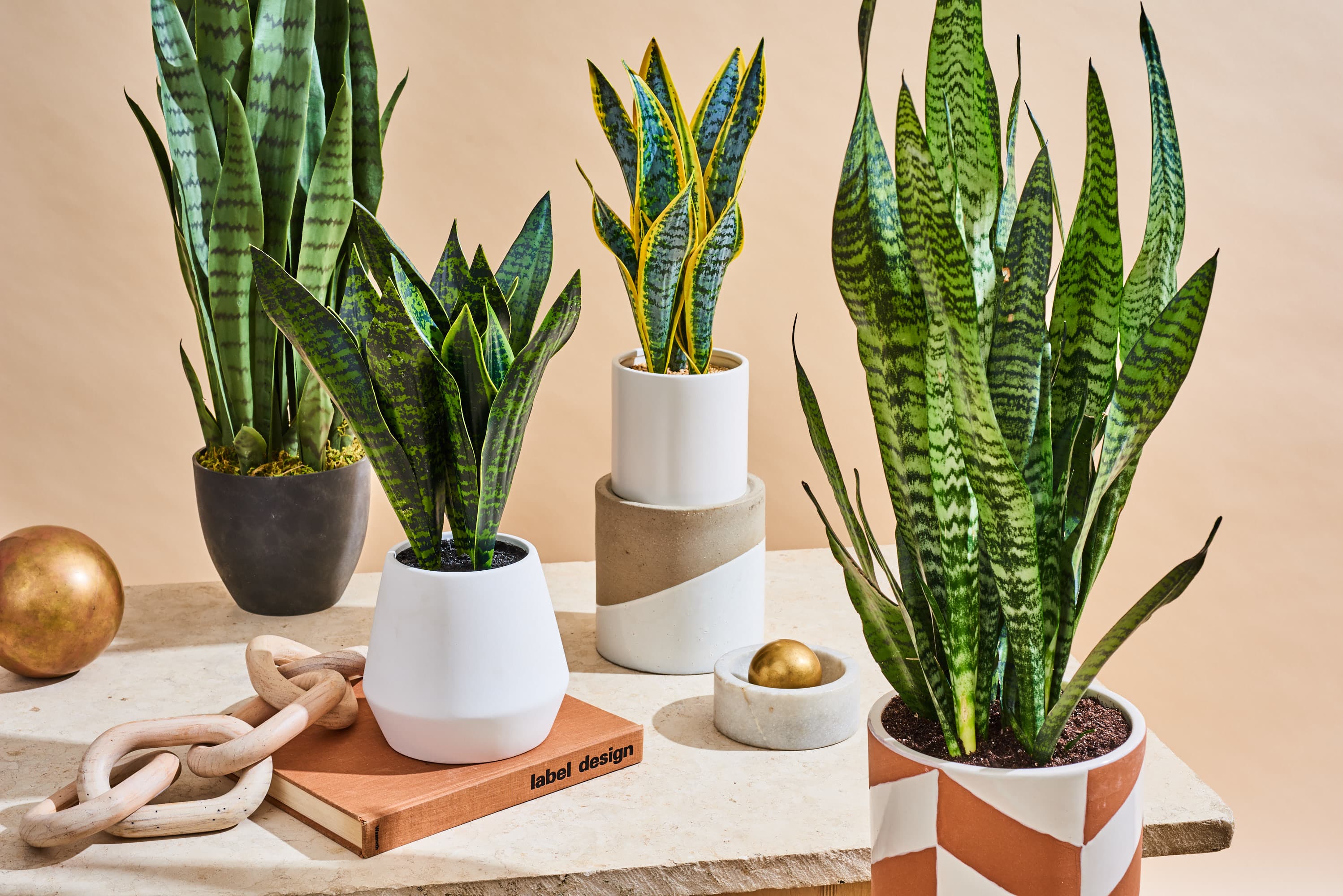Welcome back to The Indoor Garden Guide. Today’s post will be discussing low light houseplants
Many people want to grow houseplants, but then at some point come to the abrupt realization that plants require light, and their room is not very bright. This may seem discouraging, but you’ll be pleased to know there are actually several different types of houseplants which can be grown in rooms that don’t get much sunlight, and even some for rooms with no natural light.
Now to be clear, even the most shade tolerant plants still require some light, there’s nothing you can put in your dark closet and expect it to do well. At the very least there should be some indirect light from a window with a northern exposure (southern exposure gets the most sun, followed by east and west, while north gets only indirect sunlight), or in a place with consistent artificial lighting (like an office). Additionally, even though these plants are quite tolerant of lower light levels, they may still grow slower than they usually would in brighter conditions.

A note on variegation: Some versions of certain plants are variegated, meaning they have portions of the leaves/stem which lack the normal pigments used in photosynthesis. While these plants can certainly look cool (and are usually considered desirable), they have reduced surface area available for capturing sunlight, which means they aren’t as well suited for low light conditions compared to their non variegated counterparts.
Low Light Plants:
Pothos (Epipremnum aureum)

-
-
- Potentially the most common and popular of all houseplants, pothos (aka devil’s ivy) is well suited to nearly all indoor growing conditions. It grows as a trailing plant, with vines that can reach 40 ft or more if cared for properly. It comes in several different colors and patterns, but for extremely low light situations, the plain green varieties are best.
-
Heartleaf Philodendron (Philodendron hederaceum)

-
-
-
- Very similar to pothos in many ways, the philodendron is actually a distant cousin of pothos as well. It is also a green trailing vine that can tolerate a wide range of light conditions. The “heartleaf” (seen above) and “brasil” varieties are some of the most popular
-
-
Peace Lily (Spathiphyllum)

-
-
-
- This leafy plant is native to the rainforests of South and Central America. It blooms throughout the year with attractive white flowers. It can tolerate low light conditions very well, and actually risks burning the leaves if you put it in direct light. This plant is generally quite resilient, but it does like to stay fairly moist, and will droop significantly if it needs water.
- It is very important to note that all parts of this plant are incredibly toxic to cats, so its best to avoid if you have any feline friends.
- “Eating just a small amount of a leaf or flower petal, licking a few pollen grains off its fur while grooming, or drinking the water from the vase can cause your cat to develop fatal kidney failure in less than 3 days”- FDA
- This leafy plant is native to the rainforests of South and Central America. It blooms throughout the year with attractive white flowers. It can tolerate low light conditions very well, and actually risks burning the leaves if you put it in direct light. This plant is generally quite resilient, but it does like to stay fairly moist, and will droop significantly if it needs water.
-
-
Chinese Evergreen (Aglaonema)

-
-
-
- Native to Southeast Asia, Chinese Evergreens are commonly seen in places like shopping malls which don’t usually have the brightest natural light. They have large glossy leaves, typically with silver or gold patterns. They are also relatively easy to care for.
-
-
Snakeplant (Sansevieria)

-
-
-
- These upright, succulent-like plants are another pretty common houseplant. They are tolerant of low light, mostly because they enter a state of semi-dormancy when they don’t have enough light to grow. They can normally tolerate full sun when well adjusted, so they do best in at least moderate light, but they can still survive in sub-optimal conditions.
-
-
Cast Iron Plant (Aspidistra elatior)

-
-
-
- Just like its name implies, this plant is as tough as cast iron. This includes temperature fluctuations and a wide range of light tolerances. They grow as a rosette of long dark green leaves and are very beginner friendly.
-
-
Corn Plant (Dracaena fragrans)
-
-
-
- This plant grows into upright stalks of long green leaves which resemble those of a cornstalk. They are common in office buildings and libraries (there are a bunch in Paterno Library here at PSU) because they can survive in lower light rooms.
-
-
This is not an exhaustive list, there are certainly many more types of plants out there that can do well in limited light. These are just some of the more common and easy to care for types that you’ll be likely to find at your local nursery/garden center. If none of these peaked your interest however, make sure to come back next week as we’ll be talking about grow lights and how you can use them to grow nearly any type of plant indoors, regardless of your natural lighting situation.


If you think I am Not bookmarking this guide for next year, you are wrong, sir! I find this stuff really interesting, but I myself do not have much of a green thumb (or a natural consistency required for basic watering schedules, haha). I am especially in love with the Corn Plant, to be honest! The vibrancy and depth of knowledge with which you introduce each plant is remarkable. Somehow, the entry is playful, when it could easily become a flat list of plants. You have a way of making it interesting.
Thanks for providing such interesting images and ideas. I am looking at my options for next year, and I feel very lucky to have an expert on the ground!
See you next week 😀
Why wait until next year? CATA Red loop runs to the Walmart on Atherton Street which has a (albeit somewhat limited) garden center, and your future plants are already waiting…
This blog brought me way back to my junior year of high school when I was part of a leadership project that aimed to incorporate more greenery into our school. Unfortunately, I was the only junior in a group of seniors, so the project never went further than just our classroom presentation. However, I remember doing a lot of research on low-light plants, specifically spider plants and ZZ plants. I researched all about the various soil they required, how much maintenance they needed, and how much light they needed. I even sent out a school-wide survey to teachers and students to see if this was something they would like. I really enjoyed this project because I learned so much about a topic I was rather ignorant of before. I would be interested in spearheading another project like this in the future and hopefully, it can actually happen.
While I was reading your blog, I enjoyed how detailed it was by listing various plants possibilities! I was wondering how artificial light can provide the energy required to perform photosynthesis. My initial thought is that there is no replacement for natural light. Also, what you said about the Peace Lily is quite scary for people who have cats and do not know better, considering the Peace Lily is a “popular house plant.” Finally, I know that in this blog you discussed house plants that do not rely on much sunlight, but what is the best topsoil for indoor plants? Traditional topsoil, or something specific?
Artificial light is definitely never going to be as intense as natural sunlight, however, with a grow light we can control how close it is to the plant, so even though it is way less powerful, it is also a billion times closer to the leaves than the sun is. The other thing to consider is we can leave a grow light on for a longer period of time than the sun is “on”. So while a plant may only get 8 hrs. of intense sunlight, we can easily provide it with 10, 12, or even 16 hours of artificial light every day to compensate for the lack of intensity.
As far as the peace lily, you’re right that its definitely scary for people who have cats but don’t know what they’re buying, which is why its always a good idea to do your research first.
If you’re actually curious about soils for houseplants, I wrote a whole post on potting mix which you can find here: https://sites.psu.edu/cfcmmiv/2023/01/12/the-indoor-garden-guide-part-1-potting-media/
This was a really interesting read. One of my friends has a little plant in his dorm room, and we always joke about “feeding it” by shining a lamp on it. Learning about the different types of low light plants was super informative. It had never occurred to me that variegation(learned a new word today) would cause plants to need more light – but the lack of pigmentation makes sense.
Charlie,
Great work on this informative and entertaining blog post. I thoroughly enjoyed getting to learn more about low-light plants saying I used to have my own outdoor garden. I am definitely taking mental notes for what plants I should include in my apartment next year as I absolutely love incorporating plants, especially if they’re low maintenance. I think plants can completely transform a space and brighten any room. The incorporation of plants as college students is frequently overlooked but can make an apartment a home. I definitely plan on getting some Snakeplants for next year as I currently have a fake one in my dorm but it would be so much better with a real one. But overall, great work on this post and I wish I had more time to read some more of your plant posts!